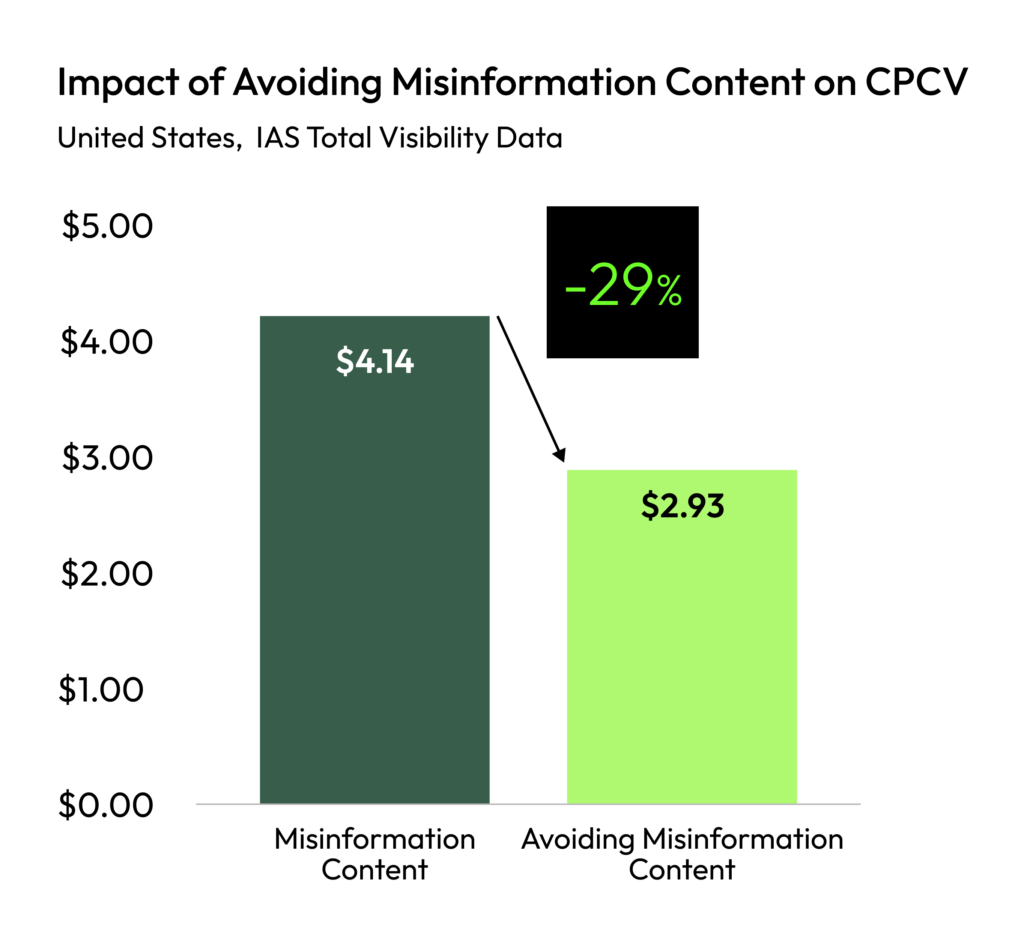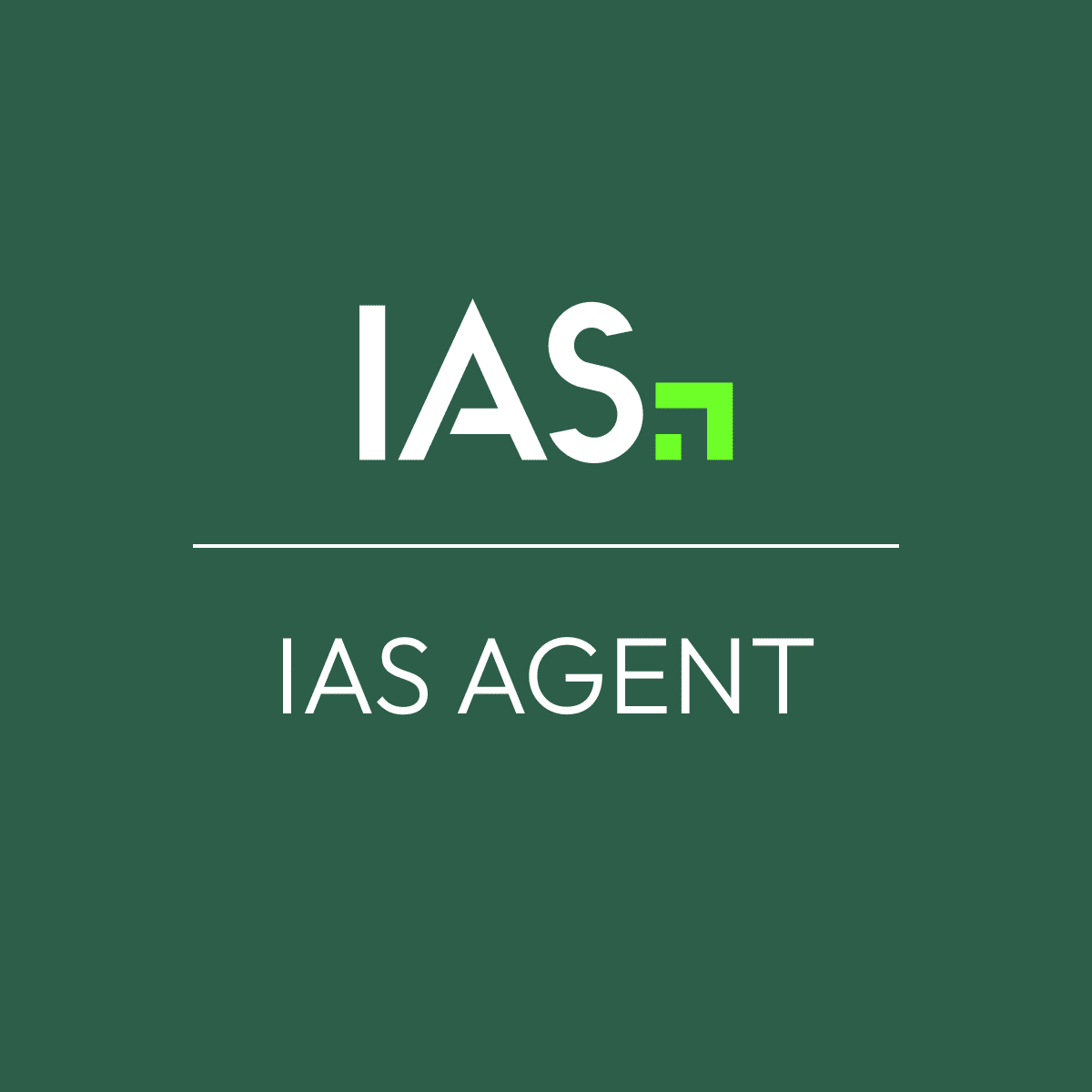The U.S. presidential election year is well underway, with media coverage ramping up across the country. One top-of-mind concern for advertisers during this politically-salient time is misinformation — in fact, marketers cite ads delivering alongside risky content like misinformation as their top media challenge in 2024.
In the heated environment of election season, the proliferation of misinformation can pose significant challenges for brands. Ads placed next to misleading or false information not only risk damaging a brand’s reputation, but can also erode consumer trust. As the media landscape becomes increasingly polarized and the spread of misinformation accelerates, brands must navigate this terrain with caution.
The IAS Election Lab analyzed the rise in political content and misinformation, exploring how IAS Context Control Avoidance segments can be tailored to different brand needs as potentially risky content saturates the media. Plus, we tested the scalability of Context Control Avoidance segments for protecting brands from risky content without overblocking or blocking responsible media, which refers to content that is trustworthy, accurate, and prioritizes diverse and inclusive reporting.
Here’s what we found.
Risky political content and misinformation rose in Q1 2024
The rates of risky political content and misinformation in the U.S. increased in the first quarter of 2024, highlighting potential threats to brand equity for unprotected campaigns. Plus, The Election Lab recently found that risky political content increased during major political events in Q1 2024, including Super Tuesday.
Compared to Q4 2023, risky political content rose 29% to reach 1.03% of all impressions measured in the U.S. in Q1 2024. And there’s a hefty reason why advertisers should steer clear of risky content: more than seven-in-10 U.S. consumers think that the content surrounding a brand’s ads is a reflection of their values.

Misinformation is also surging. Compared to Q4 of last year, Q1 2024 saw a 25% higher rate of misinformation content in the U.S. Consumers have become increasingly sensitive to ad adjacency to misinformation, with 75% reporting that they’d feel less favorable toward brands that advertise on sites that spread misinformation.

As the data proves, risky political content and misinformation are both on the rise. So what can advertisers do to scale despite this risky and misleading content?
Tailor to your brand’s specific risk avoidance
All IAS Context Control Avoidance segments use natural language processing to precisely comprehend context, sentiment, and emotion to protect brands at scale. But Context Control Avoidance segments allow advertisers to further tailor their campaigns to granular levels that make the most sense for them. For example, while some brands may prefer to avoid advertising near any political content, others may choose to avoid only a subset of content, like negative political content or negative content directed toward political parties.
So why would an advertiser choose a less strict threshold? It’s all about scale.
Avoiding only negative political content resulted in a 28% decrease in blocked impressions compared to avoiding all political content, unlocking an estimated 169 billion impressions per year, as estimated by Xandr DSP inventory projections. Advertisers could also choose to avoid only negative sentiments towards political parties, resulting in a 62% decrease in blocked impressions compared to avoiding all political segments, opening up an estimated 374 billion impressions annually.

Similarly, advertisers may have different needs for thresholds surrounding misinformation risk. Avoiding medium risk misinformation reflects a relatively conservative threshold, but advertisers can also opt to avoid only misinformation surrounding politics or high-risk misinformation. Per Global Alliance for Responsible Media (GARM) definitions, medium risk misinformation is a broader category that includes content about misinformation, whereas high risk misinformation only includes content that presents a false narrative.

Simply activating IAS’s high risk misinformation avoidance segment instead of medium risk yielded a 98% decrease in blocked impressions compared to the medium risk misinformation segment, unlocking an additional 492 billion impressions annually, according to Xandr DSP inventory projections. IAS’s Context Control Avoidance segment specific to political misinformation had a 97% decrease in blocked impressions compared to medium risk misinformation, leading to an additional 487 billion impressions annually.
IAS Context Control Avoidance segments don’t block trustworthy content
Just as media experts and consumers alike denounce misinformation, they also recognize the importance of supporting responsible and trustworthy journalism.
To ensure that IAS Context Control Avoidance misinformation segments aren’t blocking trusted journalism, The Election Lab looked at how these segments performed for a sample of high impression volume publishers throughout Q1 2024. The IAS Context Control Avoidance medium-risk misinformation segments block exceptionally small rates of impressions on these sites. In the context of news-related misinformation, no impressions were blocked on these trustworthy publishers for the duration of Q1 2024. Both medium risk misinformation and politics-related misinformation saw a few blocked impressions, but these represented less than 0.01% of all impressions served to these publishers in Q1.
The result? Context Control Avoidance segments protected campaigns at scale without blocking responsible media.
Avoiding politically risky content drives superior results
How did politically risky content impact business results across Q1 2024? We examined IAS data enriched with performance and cost metrics to determine the impact of politically risky content and misinformation on success rate (defined as conversions or clicks) and cost per conversion (CPCV) during Q1 2024.
Politics had the biggest impact on the bottom line. Ads avoiding political content had a 32% lower CPCV than ads adjacent to politically risky content, representing $1.04 lower cost per conversion. Ads avoiding political content also had a 179% higher success rate.
Ads avoiding misinformation, on the other hand, had a 29% lower cost per conversion than ads adjacent to misinformation, representing $1.21 less per conversion. This lower CPCV is in part due to the 46% lower success rate for ads adjacent to misinformation.


Overall, ads that avoid risky political content and misinformation lead to more conversions and clicks, as well as lower costs per conversion. Enabling IAS Context Control Avoidance can protect your brand from this risky content while continuing to drive results.
How IAS Can Help
IAS offers 280+ off-the-shelf Context Control Avoidance segments to help advertisers avoid placing their ads alongside negative or risky content beyond the GARM categories. Before a bid is placed, IAS’s predictive science pre-screens pages to filter out tailored content that isn’t suitable for your brand.
Context Control Avoidance segments help marketers control where their brand is seen, which can be especially crucial with the growing uncertainty of the upcoming election cycle. Avoidance segments protect brand safety without harming scale so you can continue to drive superior results throughout an election year and beyond.
In addition, we recently announced the expansion of our Brand Safety and Suitability Measurement capability to now include the Global Alliance for Responsible Media (GARM) category of misinformation for leading social platforms, like Meta. Advertisers can now review when their ads run alongside content on the subject of misinformation on the feed, in addition to open web.
A comprehensive solution that protects all ends of the digital ad cycle is critical during the election season and beyond. End-to-end, AI-driven measurement coupled with optimization solutions that are tailored to each brand’s respective needs are key to detecting and avoiding misinformation on the internet’s most prolific and unpredictable environments.
For a step-by-step guide to scaling your brand in an election year, download your copy of the IAS Political Guide, and explore our IAS Election Lab for more insights.
 Share on LinkedIn
Share on LinkedIn Share on X
Share on X

